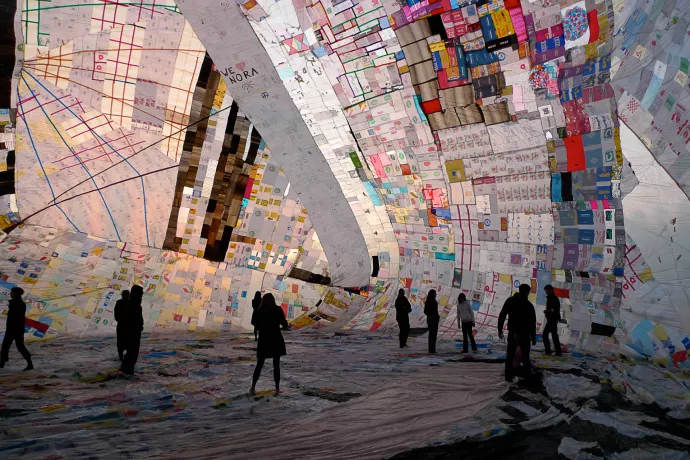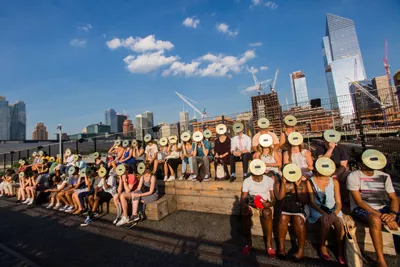
The Work of Wind: Air, Land, Sea
The Work of Wind: Air, Land, Sea, a 10-day contemporary art festival exploring climate change, environmental crisis and resilience, and featuring 13 leading Canadian and international artists, opens in Mississauga on September 14.
The exhibition, presented by the Blackwood Gallery at U of T Mississauga in partnership with the City of Mississauga, will take place Sept. 14 to 23 in the Southdown Industrial Area, bordered by Clarkson Village to the north and Lake Ontario to the south. The festival’s installations will raise challenging questions about elemental forces, geopolitical processes and environmental violence impacting the Earth.

This contemporary art project is the first of its kind in Mississauga. In addition to the 13 installations, it will also feature a series of live events, including performances, talks, workshops and a kids’ creative construction zone, reaching diverse communities across the city. The festival includes discussions and information hubs, highlighting a year-long public program in Mississauga (to summer 2019) titled The Society for the Diffusion of Useful Knowledge.
Near the site of the festival’s official launch, you’ll find The House Sets the North, an installation by Markham artist Xiaojing Yan built using 30,000 metres of thread. The structure incorporates elements of Chinese symbolism, encouraging viewers to reflect on contemporary questions of belonging and climate refuge.
Over the course of the 10-day festival, the public can catch the inflation of Museo Aero Solar, artist Tomás Saraceno's "flying museum", constructed entirely from reused plastic bags. It was assembled by volunteers from throughout the Mississauga community and is a larger-than-life structure powered only by solar energy.
Closer to the shore of Lake Ontario, festival attendees can find The Liberation of Chinook Wind, by Tania Willard, a Secwepemc artist who creates poetry using wind speed data as a way to reflect on the histories of Chinook winds, Chinook language and Chinook salmon.
The Work of Wind project, project, adds Shaw, is “an opportunity for unprecedented collaboration across the city’s arts and cultural sector, activating connections between environmental organizations, municipal government, industry, and academic researchers. This project is a chance for artists, scientists, academics, school groups and youth, business leaders, social innovators, environmental stewards, and everyday citizens to engage with each other in meaningful discussion about climate change and environmental responsibility. It’s because of the incredible partnership of the University of Toronto Mississauga and the City of Mississauga that we are able to mobilize together in this way and harness art’s power to address the urgent issues of our time.”
There are multiple connections between U of T and UTM and The Work of Wind, including various researchers in artist projects and programs. These include: Steve Szigeti (assistant professor, teaching stream, ICCIT); Kent Moore (professor, Department of Chemical & Physical Sciences); Sara Hughes (assistant professor, Department of Political Science); Karyn Recollet (associate professor, U of T's Women & Gender Studies Institute); Renée Hlozek (professor, U of T's Dunlap Institute for Astronomy & Astrophysics); UTM’s Centre for Urban Environments, the Master of Science in Sustainability Management program; and UTM’s Remote Sensing and Spatial Ecosystem Modeling laboratory.
The Work of Wind is one of 200 projects funded in part through the Canada Council for the Arts New Chapter program, supporting the creation and sharing of the arts in communities across Canada.

